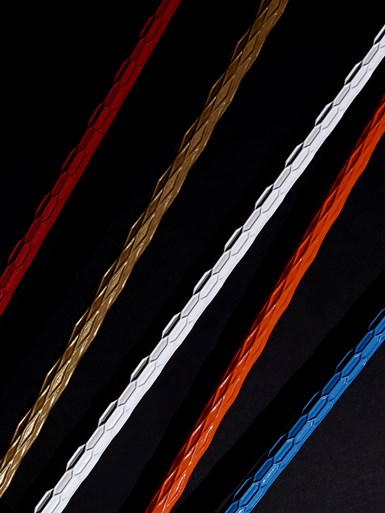The shaft of a golf putter is the simplest part of the club. Simpler than it should be? Scott and Patrick Snarr believe so.

Left to right, Scott and Patrick Snarr, brothers and co-founders of Snarr3D. Photo Credit: Snarr3D
CEOs and brothers alike (as well as golfers), they founded startup company Snarr3D to deliver a redesigned product through 3D printing: Utilizing AM, Snarr3D discovered a way to shift the weight distribution of a golf putter shaft without adding weight after the fact. 3D printing solid sections inside otherwise hollow shafts enables the positioning of the weight virtually anywhere along the shaft of the club. Shifting the balance point of the club to the optimal position of the golfer allows for better speed control and an improved putting stroke.
3D printing also allows for texture designs on the shaft exterior. The combined goals for this technology are therefore to bring high-performance, aesthetically innovative putters to market. The brothers say the patent-pending equipment will offer golfers heightened levels of customization and control. Snarr3D aims to redefine the speed control and accuracy of the putter through the transformative power 3D printing can have on existing products.
Lightbulb Moment
Originally, the idea for 3D printing the shaft of a golf putter began as collective inspiration of Scott and Patrick Snarr when attending the University of Texas at Austin for their engineering Ph.D.s (Scott has since graduated). It began with a simple assignment for an AM class.
Tasked with redesigning a manufactured product to enable a newfound utility, the Snarr brothers instantly imagined a golf club – specifically, a putter. But rather than developing the idea for the assignment, the Snarr brothers anticipated its potential and held off. Snarr3D was founded in 2021 and is currently working toward patenting the 3D printed putter design to bring to market soon.

One of Snarr3D’s original designs, this photo depicts the variety of colors available upon market release. Photo Credit: Snarr3D
“Our passion for golf began at an early age, as a favorite family activity,” says Patrick. He fondly remembers all his family members playing the sport together. Now, that shared love is blended with their knowledge of AM.
Fortunately, access to printers as well as the materials needed to begin the creative process were readily accessible. “We truly consider ourselves a university startup. We had a lot of resources available to us, including the Innovation Center [at the University of Texas],” says Scott.
Conceptualizing a Different Approach
After founding the company, the Snarrs set out to conduct independent studies to determine how weight distribution in the shaft of the putter directly affects the putt.
“With additive, the key is efficiency. You can add weight in certain places, but we aren’t necessarily adding any weight [overall]. We’re redistributing weight. For instance, we can take the weight from the tip [of the club] and move it to the bottom, essentially changing the balance point of the entire club,” says Scott.
Traditionally, golf shafts are manufactured through a drawing process and begin as hollow tubes. For weight distribution, the desired weight is added to an already existing shaft design as a separate accessory.
“Our shaft technology allows for a scientific approach to moving weight around without having to booby trap the golf club to achieve a functional putter,” says Patrick.
Image depicts the current putter shaft textures created by Snarr3D. Photo Credit: Snarr3D

Following weight distribution is the application of aesthetics – texture, color and geometric design. Currently, Snarr3D has generated two different texture designs for the shaft with plans to experiment with more in the future.
3D Printing (From the Ground Up)
How will Snarr3D produce their golf shafts? Their additive process is laser powder bed fusion (LPBF), a process utilizing a laser to melt material layer by layer, which fuses together upon cooling. LPBF is a process exhibiting the idea of “building from the ground up” and the putter shafts are extreme examples of this: maybe the part with the largest height to diameter ratio ever made in this process.

The prototype build validated the ability to print the shafts in a vertical orientation without support. Photo Credit: Snarr3D
SLM Solutions in Germany agreed to print parts for Snarr3D on one of its machines. Subsequently, Snarr3D is in the process of experimenting – printing shaft prototypes using the SLM 800 printer, a tall-Z-height machine able to produce the shafts in one piece (which also has capacity to accommodate up to 500 shafts in one build). The large maximum vertical travel of the build allows for vertical orientations without supplementary support, ultimately reducing material used and the need for postprocessing finished products.
The first endeavor to 3D print prototypes involved 25 shafts with room on the build plate for many times more, says Patrick.
The Power of the Printer
In addition to the Z height requirement, the need to print with aluminum – the putters’ material – is another imperative.
“Finding a contract partner in the United States with printers to accommodate our needs is proving to be our biggest challenge,” says Patrick. The available technology is primarily dominated by the aerospace industry.
There are two reasons Snarr3D is unable to acquire access to the necessary machines in the United States, he says.
- The demand from the space industry customers has the available, tall-Z-height machines booked up.
- Parts for the aerospace industry are primarily made of metals such as titanium. It would prove too time consuming for manufacturers to change out the powder stock just for the Snarrs.

The SLM 800 printer allows Snarr3D to realize the Z height needed for its builds. Photo Credit: SLM Solutions
In the meantime, SLM Solutions in Germany is functioning as a manufacturing contractor, printing the necessary parts for Snarr3D.
The brothers reveal they have toyed with the idea of one day becoming Snarr3D’s own contractor if the means to buy their own machines becomes available. The hope is to produce on their own tall LPBF machine here in the United States.
Advancing Toward Commercialization
As of now, Snarr3D intends to bring putters to market come January 2024. The first step is to finalize data findings to ensure optimization of the putter.

Snarr3D tests out a 3D printed putter shaft on the golf course, one step closer to swinging into the market. Photo Credit: Snarr3D
Once confirmed, final design choices will be implemented. “Right now, it looks like we will have three different putter options to choose from come launch time,” says Patrick. In the future, customization will be a viable option for customers looking to create an individualized putter.
The second step will be generating final prototypes to explore production. As of now, postprocessing seems largely unnecessary. However, the company is trialing a heat treatment to test if this step has the potential to positively affect the performance of the putters.
“Right now, we basically build [the shafts] and cut them off the [build] plate without using a heat treatment. Then we add a surface finish process or powder coating, and they are ready to go,” says Scott.
Snarr3D’s goal is to generate a commercially ready product in the coming months that will be viable for them to make their initial swing into the market.
Related Content
This Drone Bird with 3D Printed Parts Mimics a Peregrine Falcon: The Cool Parts Show #66
The Drone Bird Company has developed aircraft that mimic birds of prey to scare off problem birds. The drones feature 3D printed fuselages made by Parts on Demand from ALM materials.
Read MoreHow Machining Makes AM Successful for Innovative 3D Manufacturing
Connections between metal 3D printing and CNC machining serve the Indiana manufacturer in many ways. One connection is customer conversations that resemble a machining job shop. Here is a look at a small company that has advanced quickly to become a thriving additive manufacturing part producer.
Read MoreWith Electrochemical Additive Manufacturing (ECAM), Cooling Technology Is Advancing by Degrees
San Diego-based Fabric8Labs is applying electroplating chemistries and DLP-style machines to 3D print cold plates for the semiconductor industry in pure copper. These complex geometries combined with the rise of liquid cooling systems promise significant improvements for thermal management.
Read MoreHow Norsk Titanium Is Scaling Up AM Production — and Employment — in New York State
New opportunities for part production via the company’s forging-like additive process are coming from the aerospace industry as well as a different sector, the semiconductor industry.
Read MoreRead Next
Does 3D Printing Drive Startups, or Vice-Versa? AM Radio #1
What is it about 3D printing that makes it such a common choice for startup companies? Are these businesses driving additive manufacturing forward, or are they being driven? Peter Zelinski, Stephanie Hendrixson and Julia Hider discuss.
Read MoreImproving Metal 3D Printing Processes by Reducing Support Structures
SLM Solutions’ Free Float program reduces the need for support structures, decreasing build time and powder usage, improving part quality, opening up space for more parts and giving users more design freedom.
Read MoreBike Manufacturer Uses Additive Manufacturing to Create Lighter, More Complex, Customized Parts
Titanium bike frame manufacturer Hanglun Technology mixes precision casting with 3D printing to create bikes that offer increased speed and reduced turbulence during long-distance rides, offering a smoother, faster and more efficient cycling experience.
Read More





















